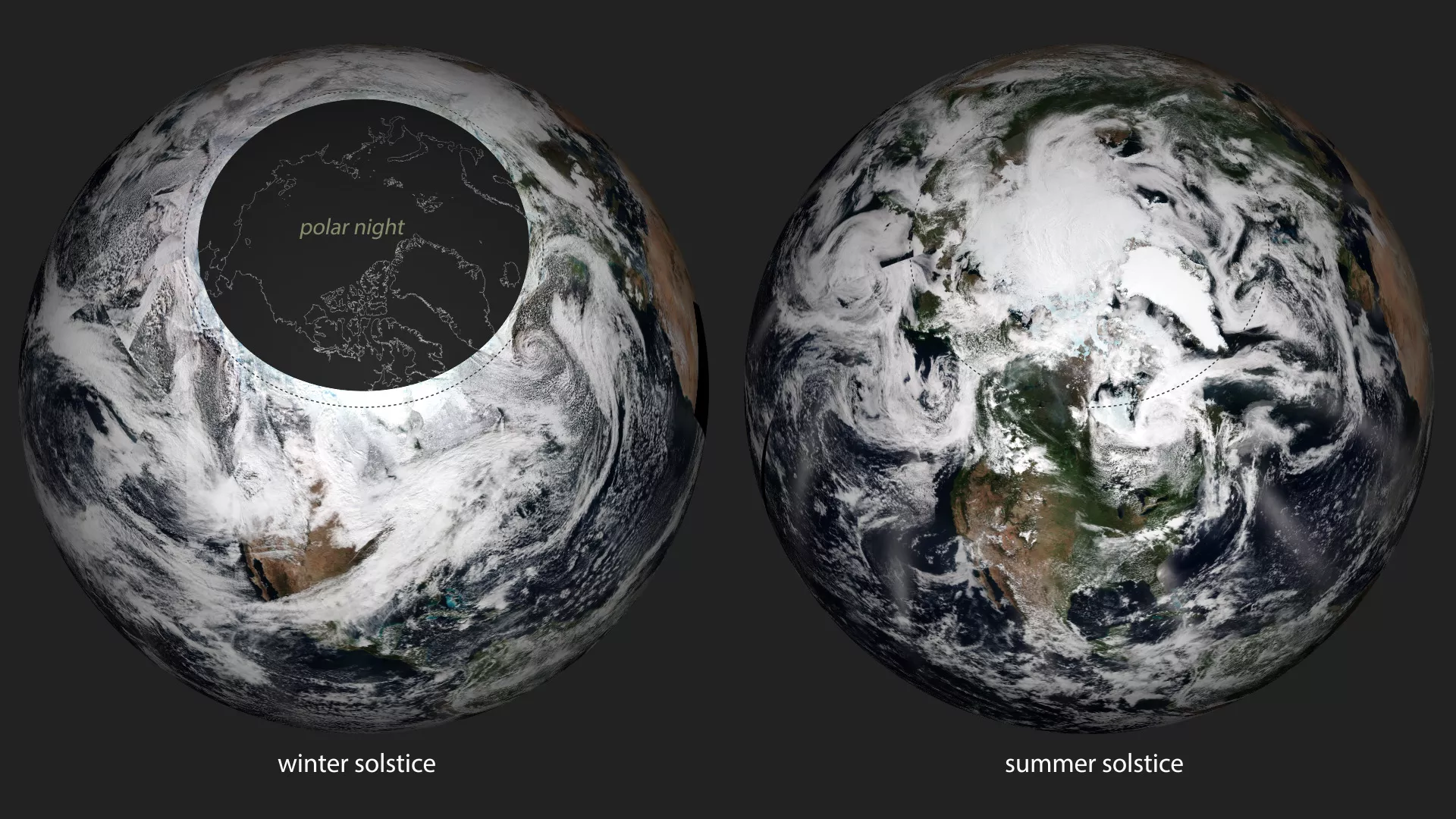
The official start of astronomical winter -- the winter solstice -- occurred at 5:44am this morning. The winter solstice is the exact moment that the Northern Hemisphere is tilted the farthest it ever gets from the sun. As a result, tonight will be the longest night of the year for the Northern Hemisphere. This is evident by the fact that the true-color imagery we get from the NOAA/NASA Suomi NPP satellite, which requires visible light, has no return over a large portion of the North Pole, as shown in the image from December 21, 2015, on the left. Compare this to the image taken on the last summer solstice, June 21, 2016 (right), which shows the North Pole in its entirety. Although the winter solstice marks the shortest daylight period in the Northern Hemisphere, it’s not the day of the latest sunrise or earliest sunset. Most places in the mid-latitudes see their earliest sunset two weeks before the solstice, while the latest sunrise is not until early January. The misalignment is the unique result of the Earth’s 23.5-degree tilt and our elliptical orbit around the sun. Of course, "astronomical" winter is not to be confused with "meteorological" winter, a term used by meteorologists and climatologists, who break the seasons into three-month periods based on the annual temperature cycle and the calendar. In general, winter is the coldest time of the year and summer the warmest, with spring and fall being the transition seasons. This is the concept on which meteorological seasons are based. Thus, meteorological winter pertains to the months of December, January, and February, whereas astronomical winter runs from today, December 21, 2016, to March 19, 2017.
